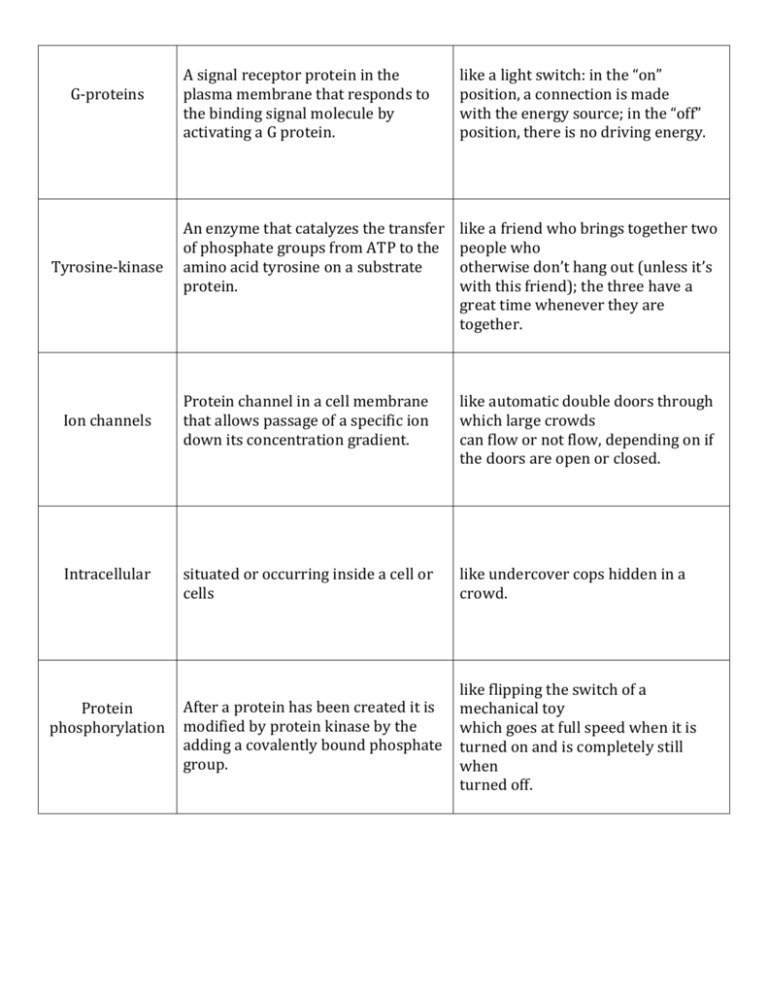G-proteins A signal receptor protein in the plasma membrane that
advertisement

G-proteins Tyrosine-kinase Ion channels Intracellular Protein phosphorylation A signal receptor protein in the plasma membrane that responds to the binding signal molecule by activating a G protein. like a light switch: in the “on” position, a connection is made with the energy source; in the “off” position, there is no driving energy. An enzyme that catalyzes the transfer of phosphate groups from ATP to the amino acid tyrosine on a substrate protein. like a friend who brings together two people who otherwise don’t hang out (unless it’s with this friend); the three have a great time whenever they are together. Protein channel in a cell membrane that allows passage of a specific ion down its concentration gradient. like automatic double doors through which large crowds can flow or not flow, depending on if the doors are open or closed. situated or occurring inside a cell or cells like undercover cops hidden in a crowd. After a protein has been created it is modified by protein kinase by the adding a covalently bound phosphate group. like flipping the switch of a mechanical toy which goes at full speed when it is turned on and is completely still when turned off. Calcium ions Cyclic AMP It plays an important role in signal transduction pathways, where it acts as a second messenger Cyclic adenosine monophosphate, a ring-shaped molecule made from ATP that is a common intracellular signaling molecule (second messenger) in eukaryotic cells (for example, in vertebrate endocrine cells). It is also a regulator of some bacterial operons. like students contacting the school’s Student Activities office to elicit changes in the activities calendar. Activity regulation Transcription Amplification like drinking caffeinated drinks, if you sip the caffeinated drink over a long period all day, it will not cause a stimulant response, but if you increase the level of caffeine in the body quickly, it causes activity to increase. like the trigger on a water gun, each time the trigger is pulled the reaction is immediate and temporary; cAMP is produced each time there is a cell signal stimulant (such as epinephrine), but the cAMP does not stay present long. The synthesis of RNA on a DNA template. The strengthening of stimulus energy that is otherwise too weak to be carried into the nervous system. like when the student council petitions for a permanent change in the school rules so that things can be done in a new way. like when a new trend hits the campus and everyone— students, teachers, administrators, parents—gets into it.











